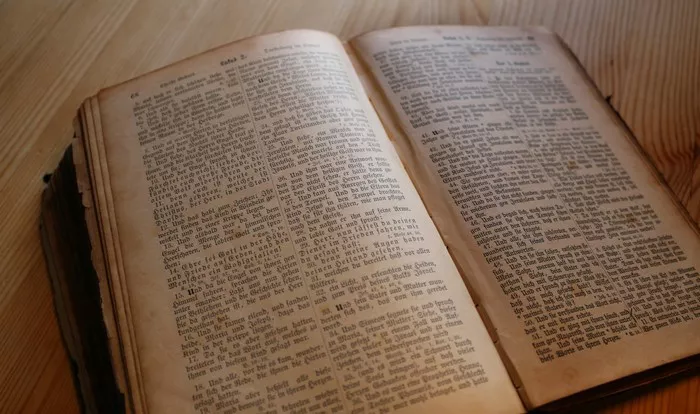Rainbows are universally recognized symbols of hope, promise, and divine beauty. Their appearance often inspires wonder and contemplation about their significance. In many cultures, rainbows are associated with various meanings, ranging from signs of good luck to representations of covenant promises. In the Judeo-Christian tradition, the rainbow holds particular significance, as it is referenced in the Bible. Exploring the occurrences of the term “rainbow” within the sacred text can provide insight into its symbolic importance and deepen our understanding of biblical narratives. In this article, we embark on a journey through the pages of scripture to uncover precisely how many times the word “rainbow” appears and the contexts in which it is mentioned.
The Symbolism of Rainbows in the Bible
Before delving into the specific references to rainbows in the Bible, it is essential to understand their symbolic significance within the Judeo-Christian context. The most famous biblical account featuring a rainbow is found in the book of Genesis, where it symbolizes God’s covenant with humanity after the Great Flood. According to the biblical narrative, after the floodwaters receded and Noah and his family emerged from the ark, God made a covenant with Noah, promising never again to destroy the earth with a flood. The rainbow served as a visible sign of this covenant, a reminder of God’s mercy and faithfulness.
Beyond its association with the Noahic covenant, the rainbow is also mentioned in the context of divine visions and heavenly imagery. In the book of Revelation, for instance, the apostle John describes a rainbow surrounding the throne of God, emphasizing its symbolic connection to divine majesty and glory.
Counting the Mentions: Where Does “Rainbow” Appear in the Bible?
To determine precisely how many times the word “rainbow” appears in the Bible, we must conduct a thorough examination of the sacred text. Utilizing biblical concordances and search tools, we can pinpoint each occurrence and analyze its context. Let us embark on this journey to uncover the instances of “rainbow” in the pages of scripture.
Genesis 9:13-16 – The first mention of a rainbow in the Bible occurs in the aftermath of the Great Flood. God establishes His covenant with Noah and all living creatures, promising that the rainbow will serve as a sign of this everlasting covenant. The passage reads:
“I have set my rainbow in the clouds, and it will be the sign of the covenant between me and the earth. Whenever I bring clouds over the earth and the rainbow appears in the clouds, I will remember my covenant between me and you and all living creatures of every kind. Never again will the waters become a flood to destroy all life. Whenever the rainbow appears in the clouds, I will see it and remember the everlasting covenant between God and all living creatures of every kind on the earth.”
Revelation 4:3 – In the apocalyptic visions recorded by the apostle John in the book of Revelation, he provides a vivid description of the throne room of God. Among the elements he observes is a rainbow encircling the throne:
“And the one who sat there had the appearance of jasper and ruby. A rainbow that shone like an emerald encircled the throne.”
Exploring the Contexts: The Significance of Rainbows in Biblical Narratives
Each mention of the term “rainbow” in the Bible occurs within a distinct narrative or vision, contributing to its broader symbolic significance. Let us explore the contexts in which these references appear and discern their deeper meanings.
1. Genesis 9:13-16 – The Rainbow Covenant
The primary biblical reference to rainbows occurs in Genesis immediately following the account of the Great Flood. God establishes a covenant with Noah and all living creatures, promising never again to destroy the earth with a flood. The rainbow serves as a visible sign of this covenant, symbolizing God’s faithfulness and mercy. Its appearance in the clouds serves as a reminder of God’s enduring promise and His commitment to the preservation of life. The rainbow covenant underscores the importance of divine grace and the restoration of creation following the cataclysmic events of the flood.
2. Revelation 4:3 – The Heavenly Vision
In the book of Revelation, the apostle John receives a series of apocalyptic visions unveiling the divine plan for the culmination of history. Among the scenes depicted is the throne room of God, where John beholds the majestic presence of the Almighty. Describing the appearance of the one seated on the throne, John notes the presence of a rainbow encircling the divine presence. The rainbow serves as a symbol of God’s sovereignty and glory, surrounding His throne with radiant hues. Its presence signifies the beauty and magnificence of the heavenly realm, offering a glimpse into the divine majesty that transcends human understanding.
Conclusion
In conclusion, the word “rainbow” appears a total of two times in the Bible, each occurrence imbued with rich symbolic significance. From the covenant established with Noah to the heavenly vision witnessed by the apostle John, the rainbow serves as a potent symbol of divine promise, mercy, and glory. Its appearance in the biblical narrative reminds us of God’s faithfulness to His covenants and the beauty of His creative design. As we reflect on the significance of rainbows in scripture, may we be inspired to ponder the depths of God’s love and the enduring hope found in His promises.
Through our exploration of these biblical references, we gain insight into the profound symbolism of rainbows within the Judeo-Christian tradition. Whether as a sign of covenantal faithfulness or a glimpse of heavenly glory, the rainbow serves as a powerful reminder of God’s presence and providence in the world. As we behold the beauty of a rainbow arcing across the sky, may it prompt us to remember the timeless truths encapsulated in its vibrant hues: that God is faithful, His promises endure forever, and His love shines brightly even in the darkest storms of life.

